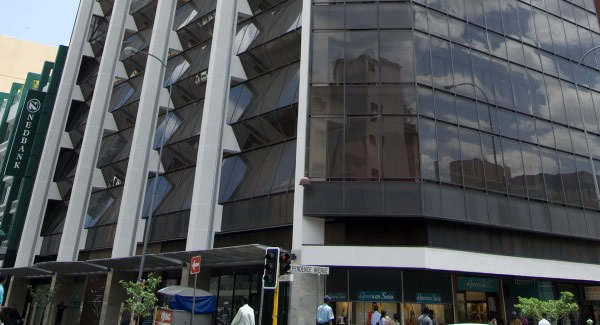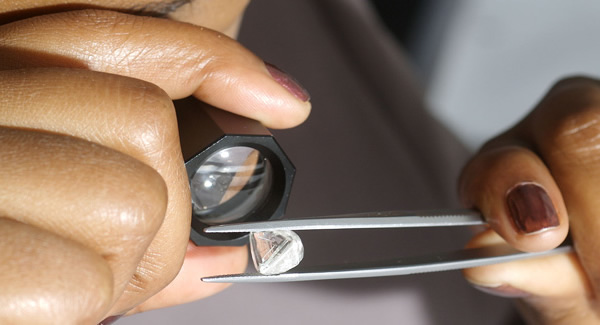No need to introduce Varda Shine to the diamond professionals! About to embark on her new life, the iconic Executive Vice President of Global Sightholder Sales at the DTC has agreed, for www.rubel-menasche.com, to go over her career within De Beers. She recalls 30 years of passion in a sector in which she will, without a doubt, still be very much present…
– Mrs. Varda Shine, how did you come to working in the diamond industry and, all the more, to joining De Beers, at Diamdel in Tel Aviv firstly, in 1984 ?
After I completed my national service in Israel I successfully applied to study medicine at university and took a summer job at Diamdel to earn some money ahead of the intended start of my studies. However, I was quickly ‘bitten by the diamond bug’ and decided to stay on with the business. It wasn’t long before I was promoted to Sales Manager and I never looked back from there.
My career has encompassed 30 years in the diamond industry with De Beers, working in a variety of roles and locations. Most of the positions I have filled have been related to the sale and/or valuation of De Beers’ rough diamonds.
– Could you tell us more about your career path ?
As Sales Manager at Diamdel, I played a key role in introducing new software platforms to computerize the stock management and business processes. While there I developed a lot of market knowledge and in 1997 I moved to the DTC in London. In 1998 I became Production Manager at the DTC, before taking on the role of Sales Director in 2003 and then MD of the DTC in 2006.
– Could you tell us more about London and this advancement in your career? What memories do you have from it?
The move to London provided me with a great opportunity to take on a broader role in the diamond world and apply what I had learnt in Diamdel at the DTC. Once at the DTC I introduced a new rough diamond assortment and was able to make an instant impact by applying the market knowledge that I had developed in Israel.
At the time the diamond business was still very traditional and male-dominated but I was able to make my mark in the business by virtue of my experience from operating in the trading environment in Tel Aviv.

– You then became Executive Vice President of Global Sales at the DTC, that is Global Sightholder Sales nowadays, and this lasted almost 8 years. A key position! What exactly was your role? What were your tasks?
There were a variety of responsibilities and tasks in this role.
The key areas of the business I had reporting into me are rough diamond sorting & valuation, sales and pricing, as well as research & development. De Beers’ marketing function also reported to me for the first two years I was in the role, before the organisation restructured and created Forevermark as a standalone business.
I also needed to work with a wide variety of stakeholders and ensure that I balance their interests effectively. I focused a lot on building and maintaining the relationships that are central to De Beers’ business. This involves a high level of interaction and engagement with Sightholders, as well as with the government representatives of De Beers’ producing country partners.
Another key element of the role was talent management and helping to develop the leaders of tomorrow.
– How did the collaboration with the sightholders go? This system structured the market for years and ensured the De Beers monopoly. What future is in store for it?
[two_third]
De Beers does not have a monopoly in the diamond industry, but does enjoy excellent relationships with Sightholder businesses. Sightholders are among the world’s leading diamantaires and, through their relationship with De Beers, have been able to catalyse a great deal of positive change in the industry.
Currently 90% of De Beers’ rough diamonds are sold through the Sightholder Sales channel, with the other 10% being sold via Auction Sales. I believe this balance between term contracts and auctions provides De Beers with the best route to market and I anticipate an exciting future for the Sightholder community. De Beers will start a new Sightholder contract period in 2015 in which the business will focus on building even stronger relationships with Sightholders. Sightholders and the ITO will remain at the heart of the De Beers business.
[/two_third]
[one_third_last]
“Sightholders and the ITO will remain at the heart of the De Beers business.”
[/one_third_last]
– How were your partnerships with the governments of Namibia, Botswana and South Africa? More generally, what relationship did you have with the representatives of the producing countries? This trading is essential for both parties…
I am very proud to say that I have excellent relationships with the representatives of our government partners and working with them to create mutual benefit has been one of the greatest pleasures of my career.
De Beers has been very successful in working with governments to create pioneering approaches to public-private partnerships. We have a model in which our commercial interests are tied to the beneficiation objectives of our producing country partners and this creates a win-win-win for De Beers, Sightholders and producer countries.
– What changed with Anglo American’s buyout of De Beers? And with the transfer to Gaborone?
In many ways, very little changed with Anglo American increasing its shareholding in De Beers to 85%. Anglo American understands that the diamond industry is unique and trusts the experience and expertise of the De Beers management team to run the business successfully. However, there have been benefits to De Beers of being part of the Anglo American group; being part of a larger group brings process and systems benefits as well as economies of scale in things like procurement.
With the transfer of our international Sightholder sales to Gaborone, we are proud to have managed a seamless transition from London. Even though the relocation to Botswana did not suit all the employees who were offered the chance to move (as would be the case with any large scale transfer of business activity of this type), De Beers’ excellent talent pipeline means that there has been no disruption to operations. De Beers’ Global Sightholder Sales division has also moved into new, state of the art offices in Gaborone and this has improved the buying environment for Sightholders.
– In the last 8 years, have there been any events that particularly stood out for you? Maybe an anecdote that you would like to tell us about?
I think the thing that stands out for me the most over the last eight years is the successful establishment of DTC Botswana and Namibia DTC, the joint ventures with the respective governments of those countries. Chairing the Boards of these companies was very memorable – ensuring that the government partners understood the detail of the pressures and opportunities facing the businesses and working to ensure that the Boards worked for the benefit of the joint venture, rather than for the benefit of one of the shareholders.

– Few women can aspire to a position as important as yours, that is to say Executive Vice President of Global Sales, in the diamond industry. Why is that according to you?
Historically, like many areas of the business world, the diamond industry has been very male-dominated. I would like to think, however, that I have helped to pave the way for more women to be appointed to senior roles in the industry.
– We can safely say that De Beers and the diamond industry are at a turning point. How do you see the future for each of them? What are the major challenges to come?
[two_third]
I think both De Beers and the diamond industry have extremely bright futures. We all know that the long-term supply and demand fundamentals are very favourable and we are seeing new consumer markets drive growth as their economies develop.
In terms of the challenges, I would say that the industry needs to continue becoming more transparent, professional and financially robust. We have come a long way in the last decade or so but there is still a way to go. In addition, the industry needs to continue to compete with the increasing number of products fighting for share of consumers’ wallets, such as luxury holidays and high tech gadgets.
For De Beers, I believe the challenge will be to continue its successful evolution so as to retain its leadership position.
[/two_third]
[one_third_last]
” We all know that the long-term supply and demand fundamentals are very favourable.”
[/one_third_last]
– Do you think that ethical issues – as huge as the definition of conflict diamonds, the role of the KP or the official and unofficial place of synthetic diamonds – have made much headway in the last years? According to you, what are the top priorities to fight for?
I believe that the Kimberley Process has been very successful on the whole. Of course, it is not a perfect construct and the industry must keep working to adapt to the challenges as they develop. However, with the Kimberley Process, governments, industry and civil society came together to address an ethical issue in a way that has rarely been seen in any other industry and I think we should all be proud of how effective it has been in dealing with conflict diamonds.
[two_third]With synthetics, the ‘3Ds’ (detection, disclosure and differentiation) have been effective strategies and will continue to be; the industry will need to tweak how it applies the 3Ds but I don’t believe the issue is as prevalent as some people make out and consumers repeatedly tell us that when it comes to celebrating life’s most important moments, they want the real thing. I believe the top priority is for the industry to continue to embed effective internal regulation by focusing on disclosure, managing pipeline risk and ensuring access to effective testing equipment.[/two_third]
[one_third_last]
“Consumers repeatedly tell us that when it comes to celebrating life’s most important moments, they want the real thing.”
[/one_third_last]
– You are leaving De Beers. What will you remember from your time there?
In 30 years I have collected so many memories that it is difficult to pick just one. However, the main memories I will take away will be of the people and their passion for diamonds, both within and outside of De Beers.
– You are also a member of the DEF and you have received many distinctions. Could you tell us about it? Why is it important?
The Diamond Empowerment Fund (DEF) is a non-profit international organisation with the mission of raising money to support education initiatives that develop and empower economically disadvantaged people in African nations where diamonds are a natural resource. I believe that DEF can play a leading role in developing business leadership in diamond producing countries so that citizens of those countries can play a bigger role on the international diamond stage.
– At the dawn of this new chapter in your career, do you have any particular desires? Do you have any projects that you would like to tell us about? A dream perhaps?
30 years is a long time to spend with one organisation and so I am looking forward to taking some time out to relax and reflect. I will then focus on the next chapter of my career, but my passion for diamonds and the diamond industry remain undimmed.
Pictures DTC and Shining lights awards

